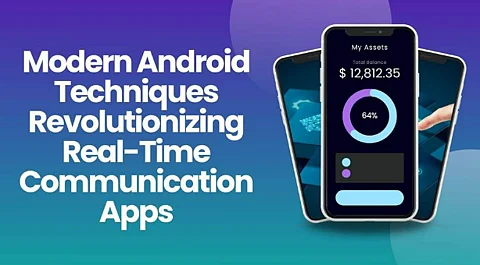

In this modern era, Hemanth Aditya Challoju, a seasoned expert in Android development, explores cutting-edge advancements in creating robust real-time communication platforms in his latest work. This article delves into the innovative methodologies that are shaping the next generation of communication apps, focusing on groundbreaking techniques redefining user experiences and overcoming performance, scalability, and design challenges unique to real-time communication environments. His work emphasizes the transformative impact of adopting advanced Android tools and frameworks. These innovations empower developers to build communication solutions that are not only efficient but also future-ready.
Modular architecture is at the forefront of optimizing real-time communication applications, addressing scalability and efficiency challenges head-on with exceptional design strategies. By breaking down features into independently functioning modules, developers can enhance scalability, reduce build times, and streamline maintenance processes with significant improvements in overall development efficiency. This architecture significantly minimizes memory overhead during simultaneous video and chat operations, creating a seamless user experience even during high-demand scenarios across diverse device platforms and varying network conditions.
Jetpack Compose has transformed Android UI development, introducing efficiency and responsiveness to real-time communication platforms with remarkable capabilities for developers. This modern framework enables a reduction in boilerplate code by up to 60%, allowing developers to focus on functionality and intuitive design for end users. Compose’s ability to handle rapid state updates and maintain consistent frame rates ensures superior performance for video conferencing apps, even on mid-range devices where resources are limited, contributing to a more reliable and engaging user experience.
Efficient memory management is critical for ensuring stability and performance during extended video conferencing sessions with multiple participants and active chat streams. Advanced strategies, including dynamic memory allocation and garbage collection, have reduced memory leaks and prolonged app stability across all operating systems, delivering consistent performance. Leveraging features like inBitmap and multi-tiered caching, modern apps maintain lower memory usage without sacrificing responsiveness or compromising overall video and chat quality for users, even under intensive workload scenarios.
Real-time monitoring systems play a pivotal role in maintaining application reliability, particularly in high-performance scenarios involving simultaneous tasks and complex workflows. Adaptive systems track millions of data points per minute, dynamically adjusting video quality and bandwidth usage to prevent disruptions and deliver smooth communication experiences. This ensures uninterrupted performance, maintaining frame rates above 27 frames per second and end-to-end latencies within user-tolerable limits for superior communication outcomes during live sessions across diverse platforms and devices.
Consistency across platforms is essential for engaging a diverse user base and achieving global application success in real-time communication solutions. By employing shared design tokens and state management patterns, modern communication apps deliver a unified user experience while respecting platform-specific conventions and interface preferences tailored to specific devices. This balance reduces bugs, accelerates design implementation, and enhances user satisfaction across all regions and device types effectively, creating a seamless experience regardless of the user’s preferred platform or device.
The new trend in optimizing the performance of applications is now focusing on communication applications and dealing with the biggest bottlenecks of performance using structured concurrency and advanced caching. These applications today are built on the usage of Kotlin coroutines for efficient task management and StateFlow for seamless state handling, reducing resource consumption to sharp precision under heavy workloads or testing network conditions. Video processing pipelines are now realized through custom algorithms that would create smooth 60fps rendering, cut power usage and memory allocation during video calls to offer consistent experiences and maintain system reliability for long periods.
Emerging technologies like machine learning are set to redefine video conferencing further with revolutionary advancements in accessibility, performance, and efficiency. Innovations such as real-time translation, automated meeting summarization, and adaptive video compression promise to enhance accessibility and efficiency for all users globally while improving application effectiveness. Meanwhile, intelligent power management strategies aim to extend device battery life, ensuring sustainable app performance without compromising user satisfaction during prolonged usage or complex interactions in dynamic communication scenarios.
In conclusion, Hemanth Aditya’s insights reveal how modern Android techniques are revolutionizing real-time communication applications, delivering unparalleled performance and user satisfaction across all platforms. He extensively analyzed the emergence of innovative development methodologies for creating scalable, reliable, and user-centric communication solutions that meet the next generation of communication in a highly connected world evolving into the future digital landscape. All these will eventually pave the way for innovations, ensuring a smooth communication experience. As the need for real-time applications is more critical in this scenario, these methodologies are going to shape its continued evolution and impact.
